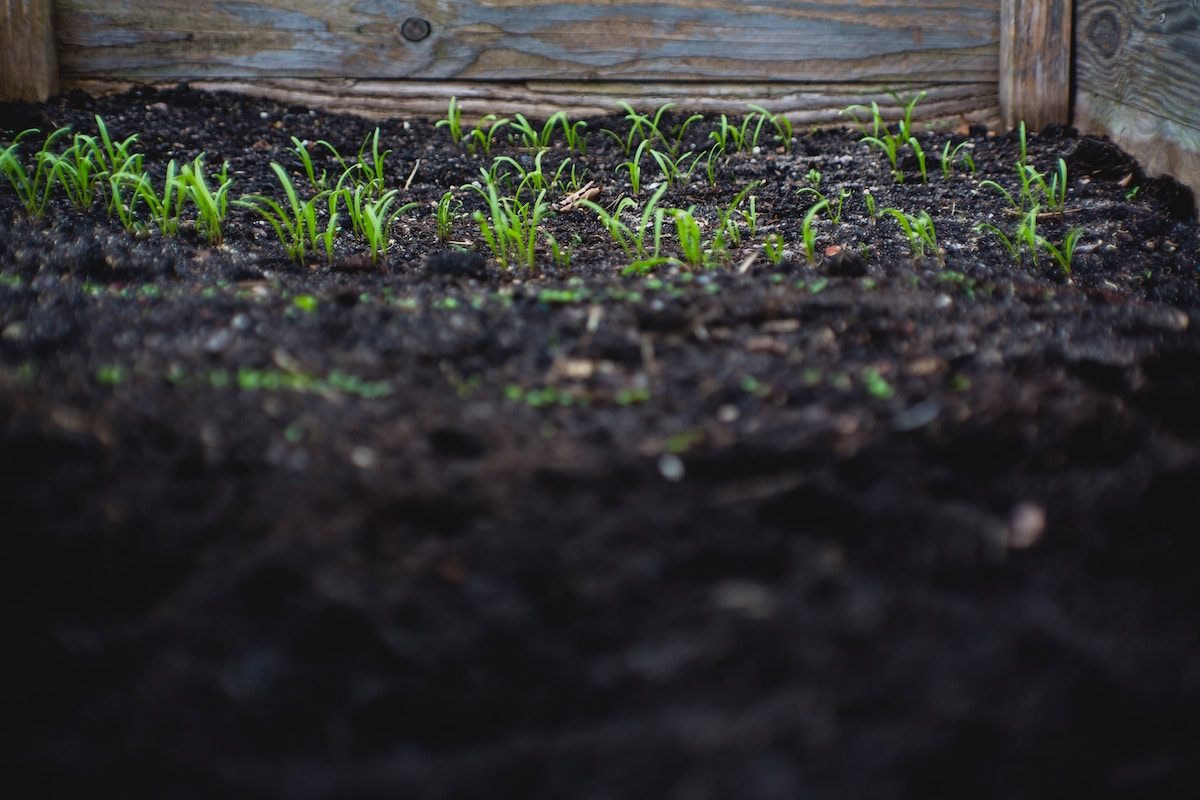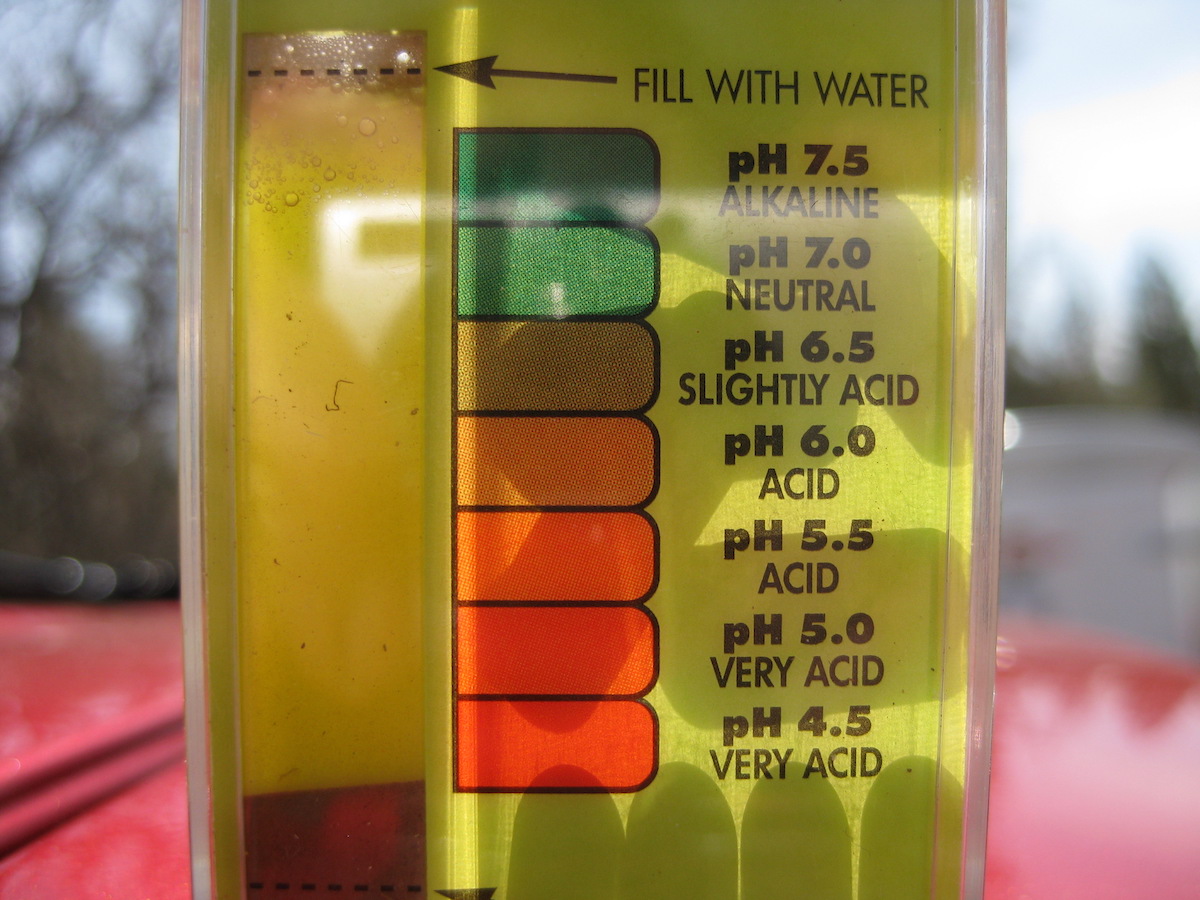How To Test Soil pH
With And Without A Kit


We often hear about pH (potential of hydrogen), but what is it really? It's the measurement of how acidic or alkaline a solution is. Moreover, this is important for a lot of different reasons. In lakes and garden ponds, it can affect the health of our fish. In our own bodies, it can affect our health as well.
Typically you see pH referred to as a number from 0 to 14. Just like how our own bodies can get upset when our pH is off, so do the plants in our garden.
So what does all of this have to do with gardening? Also, why should homeowners and gardeners pay attention to pH?
Knowing how to test soil pH is a useful skill to have when gardening. When a plant is not sitting on its ideal pH level, it won’t grow to its best potential. In worse cases, it might not even grow at all. Thus, it is essential to know what topsoil is present in your garden and on what level its soil pH resides.
Checking the soil’s pH level should be done when you prep your garden soil for planting and not when the plant has already had time to mature.
For our garden soil, if the pH is too low, you have a serious problem. However, when it's too high, some of the nutrients become unavailable to the plants. This is critical to look out for because a lot of times, we don't realise that although we are fertilising, it would be ineffective to the plant. A general rule is that most plants like a neutral pH range: 6.5 to 7.
A pH of 0 is the most acidic - like battery acid. A ph of 1 is a little less acidic, but it's still considered an acid. Your stomach acids are a similar pH. pH2 is something like lemon juice. pH3 would be equivalent to the corrosive nature of fizzy drinks. pH4 is tomato juice, and pH5 is black coffee. pH6 is plain old milk and your own human saliva.
Now pH7 is the halfway point. This is the sweet spot for a garden and a lot of different things. This is the level where pure water and our human blood resides. At pH8 we are transitioning more into alkaline solutions with egg whites. At pH9 we have baking soda and pH10, we have milk of magnesia - which is an antacid.
pH11, we have ammonia that's used for cleaning and pH12 we have soapy water. At pH13, we have a lot of our bleach. And then finally, some of our most corrosive basses is our drain cleaners at pH14.

If there's a problem with your garden’s pH level, we can correct it using the products available to us. It is a straightforward process.
Most plants will grow well in neutral soil, but some prefer either more acidic or alkaline conditions. By doing a soil pH test, you'll be able to find out which plants suit your garden.

This can be bought from a garden centre. Some testers will have a colour scale rather than numbers. If the test turns yellow or orange the soil is acidic. Green represents neutral soil, and dark green represents alkaline.

Select the ground area for which you will be measuring soil pH and use a trowel to dig a hole. It is recommended that you test specifically the area in which you are going to plant in. Different soil types may yield different results.
Break up and crumble the soil inside the hole. Make sure to remove any debris, such as stones and twigs. Fill the hole with water to create a muddy pool. You should use either rainwater or bottled water - which will have a neutral pH. It is not recommended to use tap water because it may not be perfectly neutral and will affect the quality of the test’s results.

Before beginning, wipe the tester with a tissue or cloth. Then, insert it into the soil. Wait for about 60 seconds before taking a reading and you are done.
Once you know the pH level of your soil, you can concentrate on growing plants that would do well in your garden. Just because you don’t have a kit doesn’t mean you can’t conduct a soil pH test. There are plenty of ways to do it without a kit.

A professional soil pH tester kit will give more accurate results. However, this method would still work if you don’t have a kit.
You will be using these materials:

With your trowel, dig up a piece of the soil you want to test and put it inside two separate containers. You may use any container as long as it can hold the soil and liquid.

Pour vinegar inside one container. Watch out for fizzing. Sometimes it is not immediately visible; in which case, you may put your ear close to the jar and listen for the sound instead. If there is fizzing, that means that the acidic vinegar is reacting with the base of the soil. Thus, your soil is alkaline.

If it did not fizz, grab a clean container and put another piece of the soil inside it. Add water and, with a spoon, give it a good mix. Now, add baking soda to the soil. If it fizzes, your soil is acidic.
To summarise, if there is fizzing when vinegar was added to the soil, that means your soil is alkaline. If there is fizzing when baking soda was added to the soil, that means your soil is acidic. If after both experiments there wasn’t any fizzing, your soil is neutral.
Now that you know the pH level of your soil, or at least have a rough estimate, plant plants that grow best on that pH level. This will help provide the optimal growing conditions the plant needs. If the specific plant you want cannot thrive on your soil’s pH level, then you can use methods to correct or adjust your soil’s pH level. Alternatively, you can grow that plant in a pot instead and buy the right pH of soil for the pot.
Ensuring you use the right tools and have the best type of topsoil for your home and garden is a good start. For all your garden and soil needs, contact Grabco for the best topsoil in Essex, London, and surrounding areas.